In this article, we will talk about the creation of audio podcasts, with which you can diversify your content and expand your audience.
Who and why needs to create a podcast?
Considering that listening to audio recordings don’t require such mental effort on the part of listeners, such as reading an article or even watching a video, an audio podcast is easier to learn, which explains its popularity.
With the help of an audio podcast, you can reach people when this cannot be achieved by any other means – while walking, driving, while jogging, etc. This allows you to reach even more.
In addition, podcasting can show you as an expert in the area, which can increase your credibility and customer loyalty. Also, the use of podcasts allows you to diversify content that may interest current customers and attract fans of podcasts to your site.
Preparing to create a podcast
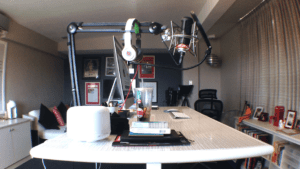 So you decided to create a podcast. It’s time to start preparing:
So you decided to create a podcast. It’s time to start preparing:
1) To get started, select a podcast theme – you should be well-versed or very interested in it.
If you are not well versed in the subject, take time to study the necessary materials. Your knowledge and ingenuity should be enough for a series of issues.
2) Define the purpose of the podcast. You must clearly understand what you want to ultimately achieve. Here are examples of possible purpose:
- Increase in traffic.
- Strengthening authority.
- Attraction and expansion of the audience.
- Increase audience loyalty.
- Increased sales.
- etc.
3) Get inspired by other people’s podcasts. Listen to the best podcasts on your topic and see what the author says and how. Consider all the nuances you noted when creating your podcast.
4) Make a podcast plan. Make a plan with themes for podcast releases, as well as a mini plan for each episode to get an idea of what you’ll be talking about. It will also help you not to lose the main idea of the story while recording the release.
5) Make sure you have all the necessary equipment for creating a podcast:
- Computer.
- Microphone.
- Headphones (without a microphone, of course).
- Program for recording and editing audio.
The choice of a microphone
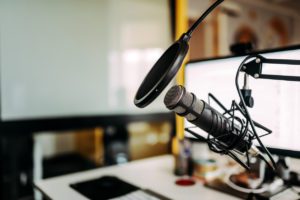 I’ll say right away that a microphone built into a computer or a headset with a microphone will not work.
I’ll say right away that a microphone built into a computer or a headset with a microphone will not work.
You will need to purchase a separate microphone, as well as a stand for it and, if desired, a pop filter that reduces sound interference from breathing, and an acoustic screen.
First of all, you need to know that there are dynamic and condenser mics.
- Dynamic microphones allow you to better suppress echo and background noise.
- Condenser microphones are more susceptible to background noise and the slightest sound. But provided that the recording is carried out in complete silence, they can be used to create a great sound.
Many podcasters tend to choose dynamic microphones, as they reduce background noise.
By the way, the microphone can be USB and XLR.
- USB microphones are connected to the USB port of the computer, which is very convenient. They are relatively inexpensive, but they have low sound quality.
- As for the XLR microphones, the sound quality of them is higher, but for each microphone of this type it will be different – you need to choose. The downside of these microphones is that they need to be connected to XLR interfaces connected to a computer via USB. The cost of XLR interfaces starts at $ 100.
The following are examples of XLR microphones that are often used by advanced podcasters:
Electro-Voice RE320
Heil PR-40
Audio-Technica BP40
Shure sm7b
Sennheiser e865
Sennheiser MD 421-I
If you are serious about podcasting, you should choose advanced microphones, but if you want to try podcasting and are not willing to spend a lot of money on it, you can start with budget microphones, although they are not the best quality.
Novice podcasters most commonly use USB microphones:
Samson Q1U (dynamic)
Samson Go Mic (condenser)
Samson C03U (condenser)
Blue Yeti (condenser)
Shure PG42-USB (condenser)
Audio-Technica AT2020USB (condenser)
Of course, among such microphones, there are absolutely cheap copies – you can find them in almost any electronics store, but their quality will be lower. However, the choice is yours!
Creating a podcast
1. Record a podcast
Before recording, check the quality of the equipment. Make sure the microphone is plugged in and the program you installed found it.
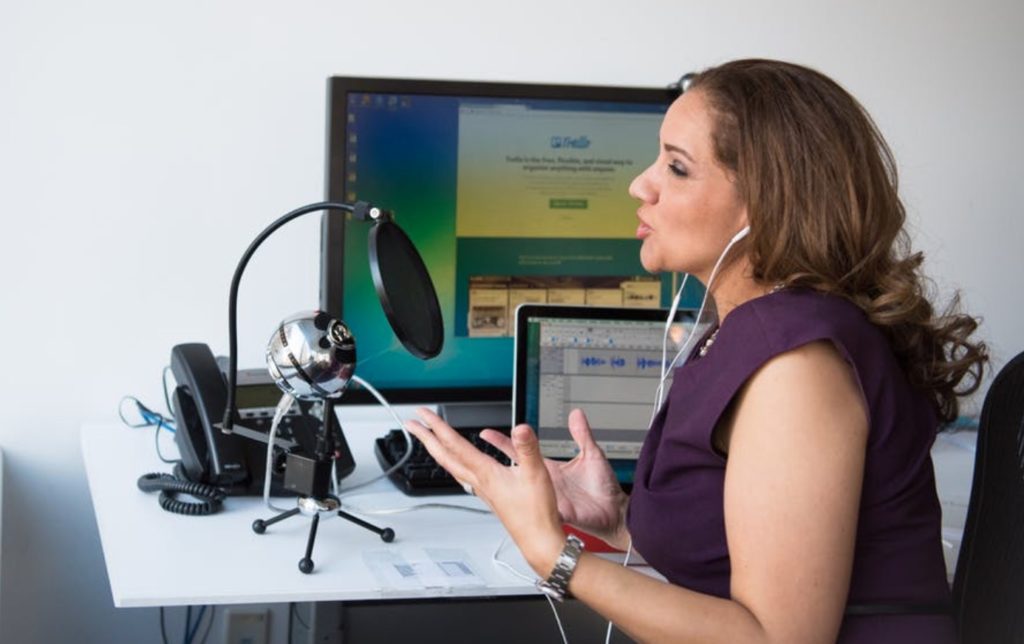 Now click on the record button in the program and start talking. This is normal if you are a little nervous. The main thing is not to be afraid of your voice and speak naturally, you should not imitate the speakers on the radio.
Now click on the record button in the program and start talking. This is normal if you are a little nervous. The main thing is not to be afraid of your voice and speak naturally, you should not imitate the speakers on the radio.
If you make mistakes, pauses, lose the thought, it isn’t necessary to stop the recording, later you can edit it and cut out all unnecessary.
What to talk about in the first issue? You can tell about yourself, about your activity, about the podcast – why you create it, what topics you will touch upon, how often it will be released.
On the one hand, this will allow you to present your podcast to the audience, and on the other, it will become an additional motivation for you. Since you made a promise to release episodes with a certain frequency and cover given topics, you will need to keep it. Let the first release be the introduction to the podcast.
Note: don’t read the text from the script. It will sound very unnatural. People who listen to podcasts expect to hear a lively dynamic conversation or an interesting monologue rather than a boring audiobook.
It’s also important to initially determine the duration of each of the planned episodes. It must be the same so that listeners know what to expect. Episodes should not be too short or too long – on average from 3 to 20 minutes to allow listeners to take time to listen and not let them get bored.
You can start with 10-15 episodes in the podcast. Think also about how often you will be releasing podcast episodes – it will be enough to start once a week.
2. Record of entry and conclusion
The intro and the outro are short recordings with music and a voiceover announcing the podcast theme, subtitle, and episode number. They indicate the uniqueness and originality of the podcast.
To record the intro and outro, you can use Audacity. It will allow you to record voice, select music and apply one soundtrack to another, adjusting their volume.
3. Editing and saving a podcast
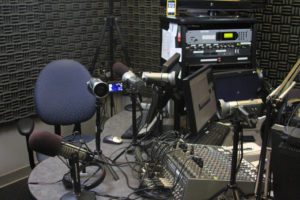
You also need to adjust the same volume level for all episodes of the podcast. Audacity is also suitable for this purpose.
There are many online tools that help you create your own audio shows using a computer or mobile device.
How to record a podcast without spending a lot of money
We have compiled a list of tools that you can use to create your own podcasts.
SPREAKER. With the help of it, any user can create his own podcast or live radio show. The function of the DJ console of this application allows you to select music tracks from the audio library and insert them into the show. Available for iOS, Android and Windows devices.
OPINION PODCAST. This easy-to-use mobile app for iOS allows you to record, edit and share audio. The free version of the application allows you to create podcasts with duration up to 10 minutes. The paid version gives you unlimited recording time.
BLOGTALKRADIO. This web-based platform will allow you to create your own radio show on the desktop of your computer and save the recording as a podcast. The service offers both paid and free services. This is one of the first web tools to offer podcasting services.
SOUNDCLOUD. This is an audio and website recording application that has 175 million active users and is known to provide a platform for independent musicians. Recently, the service opened the doors for podcast creators. SoundCloud users can upload the audio for free up to three hours. The application is available for iOS and Android.
BUZZSPROUT. This web tool allows you to record, edit and publish podcasts. You can record up to two hours of audio for free and store your podcast on the site for up to 90 days. The paid versions provide more options. The service also provides analytics so you can see how users interact with your content.
After the podcast is recorded, you need to save it. After saving, you need to put ID3 tags: the name of the podcast, episode, the name of the author of the podcast, cover, etc. Using ID3 tags gives you the opportunity to provide users with more information about your podcast, which will be shown on the display of users.
Podcast Publishing
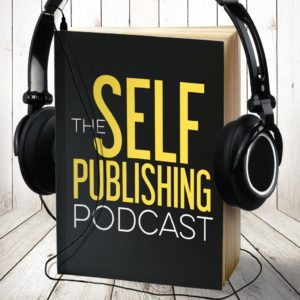 On your own website or blog
On your own website or blog
You can publish the podcast on your website or blog. You can create a separate blog for the podcast, better – on WordPress, as it already includes the RSS feed feature, which needs to be configured.
Publication on popular sites
Even if you have your own website, it’s better to post a podcast on a special site for publishing podcasts. The reason is that regular sites don’t have the bandwidth and speed required for audio files. There are a lot of podcast sites.
Podcast launch
It’s very important to make a competent launch of the podcast – it will allow you to select it from a number of others and get the necessary listening and feedback.
You can dedicate the release of a podcast to any high-profile event related to the topic you are considering. This can be a great start.
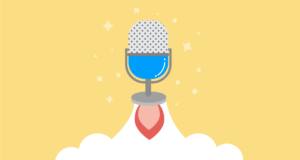 It is also effective to create a landing page that will contain all the necessary information about the podcast and with which you can create a mailing list and announce the launch of a list of contacts. Don’t forget to ask people to subscribe to the podcast and leave feedback about it.
It is also effective to create a landing page that will contain all the necessary information about the podcast and with which you can create a mailing list and announce the launch of a list of contacts. Don’t forget to ask people to subscribe to the podcast and leave feedback about it.
Building at least a small audience before launching a podcast is crucial because it provides the basis for immediate launch and can create a snowball effect.
It’s better to publish several episodes on the launch day – for example, three. Such a number of releases will be able to interest listeners and not get bored. In addition, the presence of more than one episode at the start indicates that you have something to provide in the future.
Click on rec
So, we looked at how to create audio podcasts fast and cheap. Would you like to create your own podcast, if so, on which topic? Or have you tried yourself in this already?